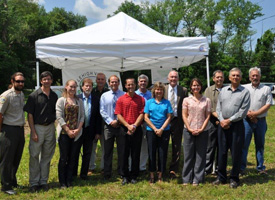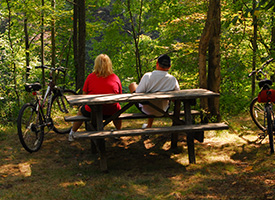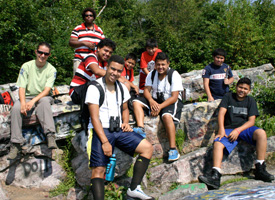
Place-Based Approach to Conservation
Throughout Pennsylvania, large regions are working together to drive strategic investment and actions around sustainability, conservation, community revitalization, and recreational projects. Known as conservation landscapes, these collaborations are developing in key landscapes where there are strong natural assets, local readiness and buy-in, and state-level investment support. Several state agencies, local governments, funders and non-profits have worked strategically and collaboratively on the ground for several years in eight landscapes to develop this value-driven, place-based approach to land conservation and community economic revitalization efforts.
Download the map of all eight conservation landscapes.
The Department of Conservation and Natural Resources (DCNR) oversees the conservation landscape program. Each of the existing eight conservation landscapes is coordinated by a DCNR “internal lead” employee and an “external lead” from a local organization. For Lehigh Valley Greenways, the local organization helping to lead the partnership is Delaware & Lehigh National Heritage Corridor (D&L).
“Imagine a place where vibrant communities draw strength from their natural assets to sustain their quality of life, a place where citizens care about protecting the special qualities of a region – their region, a place where people and partners band together to envision a better economic future, tackle shared challenges and care for the natural, scenic, and recreational resources that define the place they call home – this is a conservation landscape”
In 2004, when DCNR was launching the Conservation Landscape initiative (now a program in its second decade), DCNR Secretary Michael DiBerardinis was inspired by the established connection between state-owned Jacobsburg Environmental Education Center and the volunteer-based Bushkill Stream Conservancy to combine conservation and recreation through public-private partnership. This inspiration helped Lehigh Valley Greenways become one of the first two Conservation Landscapes designated; the other was Pennsylvania Wilds.
For more information about the DCNR Conservation Landscapes, visit http://www.dcnr.state.pa.us/cli/





